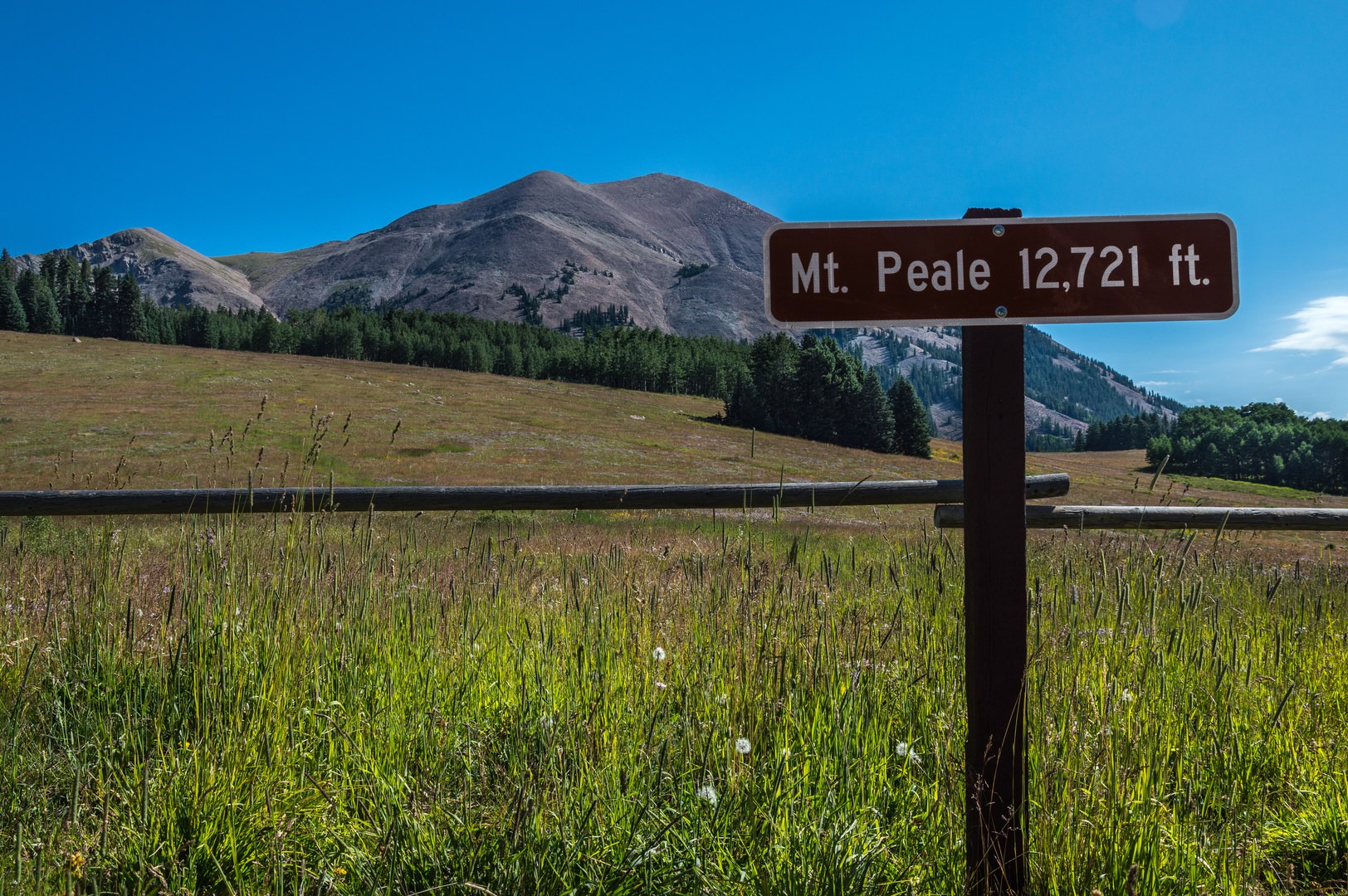You are here
This hike to Mount Peale's summit provides fantastic views of the La Sal Mountain Range, which towers proudly and inexplicably over Utah's desert canyon country. They are some of the most isolated peaks in the Southwest, with the closest peaks of equal elevation nearly 100 miles away in Colorado's San Juans. With Mount Peale at 12,721 feet and several other peaks breaking into the 12,000-foot realm, this range is the second highest in Utah, taller than the Wasatch and surpassed only by the Uintas.
Despite its impressive height, Mount Peale is accessible to almost anyone in good physical condition, not just hardcore peak baggers. It is not, in fact, the most demanding climb in the La Sals, because its domed summit allows for routes of only moderate steepness.
There is no established trail up Mount Peale, so any ascent will require a certain amount of route finding and determination. The good news is that the broad and nearly uniform talus fields make nearly any line to the summit possible. Of course, some routes are easier than others because of minute variations in the terrain. This guide covers only one route, which is the easiest, most accessible, and carries the least total elevation gain of any other option. It ascends the south face via a shallow couloir and a series of natural benches. It is normally nontechnical, requiring no more than a good pair of legs and occasional scrambling. If you are hiking this in the spring, early summer, or anytime there is snowpack, however, ice tools and crampons may be necessary.
Begin the hike from the top of La Sal Pass, where there is a sign denoting Mount Peale and its elevation. Start along the obvious trail signed as the Burlfriends Trail. After a half-mile of gorgeous meadow terrain you will reach a fork with the Tuk trail. Keep right here to remain on Burlfriends and enter the aspen forest.
Soon the trail will cross a narrow dirt road. Immediately after crossing this road, find a suitable break in the trees to head off trail and uphill. Where possible, stay on game trails or in drainages to avoid trampling the understory. Bushwack more or less straight up but slightly to the right, aiming north and a bit east to the slopes of Mount Peale.
Most of this trek is through aspen and conifer forest, but there is one large meadow that you should cross if you encounter it, because this is quicker than weaving through the trees. Once beyond this meadow you will pass through a series of small clearings. Keep heading up and slightly right and soon you will reach a large talus field, though this is still well below tree line. This is the debris that marks the bottom of the couloir to ascend. Continue up into this broad, shallow gully. Eventually the grass will run out and you will be punching straight up the talus.
Work up toward a large patch of trees up high, and pass them to the left. By this point you should have fantastic views of South Mountain, Mount Tukuhnikivatz, the Abajos in the distance, and the desert far below. You are far from finished though, as the real views await you at the top.
Just after passing this last large stand of trees, work left and up toward a visibly large bench, or less steep portion, in the mountainside. On this section, try to avoid the numerous loose, gravelly parts by staying on the solid rocks. Once on this bench, you will be able to clearly see the summit to the northeast and a false summit rising directly overhead. Traverse the south face of this lower summit while heading up to the saddle between it and the real summit.
There is actually a bit of trail settled into the talus here. Look closely for it, and for cairns that line the way, though these are hard to discern among the sea of rock. If not on the trail, this section is the most difficult and has the loosest rock, but it is still manageable.
Eventually you will reach another bench, though this one is not as obvious as the previous. Here the rocks are much bigger and more stable. Now you should be able to pick out an obvious natural contour leading up to the ridge. Follow this and you will soon be in the saddle, gaining your first spectacular views to the north and the rest of the La Sal Range. Almost there! Simply walk up the ridge to the east and you will summit Mount Peale.
The top is truly incredible. You'll have 360-degree views that include all the La Sal peaks, Canyonlands, Moab, Mill Creek Canyon, Arches National Park, Dead Horse Point, Colorado River, the Abajo Mountains, Henry Mountains, San Juan Mountains, and Ship Rock. Take a map and try to pick out all these landmarks from your vantage point atop this rare sky island.
Return the way you came to the car, or if you are feeling adventurous, pick out a different route down.
Note: This climb is easiest to do in mid to late summer or early fall when most of the snow has melted out of the couloirs. However, summer means monsoon season. Exposed, high-elevation slopes are no place to be during a lightning storm, so the safest strategy is to get up and get down early. Plan on four to seven hours for this round trip, depending on the fitness level of your group, and try to be down from Mount Peale's summit by noon if thunderstorms are a possibility.










Comments
Sign In and share them.